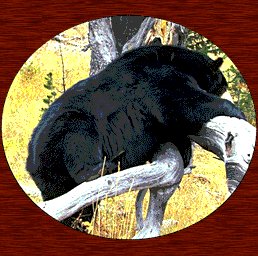
HOW TO CARE FOR YOUR MOUNT
There are several things that effect the quality of your mount once it has left the Taxidermist's shop. The two major causes of problems are age and insects.
Skins from big game animals are leather and therefore they can dry out after several years. This may be detected by watching for cracking around the lips, nose and eyes.
Smoke is also responsible for premature aging. Mounts will show smoke damage be taking on a dull brown or yellow color.
Insects are a problem especially if the mount is kept in a warm climate. Hair or feather loss, or powder at the base of horns or antlers suggest that you may have a problem with insects. Insects like to nest around the base of horns, antlers, and inside the ears.
Birds, especially Turkeys are most susceptible to infestation. Insects are hard on birds because a bird can't be cleaned as thoroughly. There is always going to be a little grease left on a bird. Larvae will devour feathers and if the damage is not recognized early, the mount is generally irreparable.
On big game, animals with short hair do not present as such of a problem as those with long hair. like bears. During your inspection gently move the hair with your hands and watch for any hairs to fall out. Sometimes, if the bugs are bad enough, entire clumps of hair will drop to the ground. Like feathers, the insect larvae travel through the hairs eating them off as they move.
If you live in a cold climate, an excellent way to kill the larvae is to put
the mount in an unheated shed or garage for a couple of winter weeks during sub
freezing temperatures. A large freezer will also do the trick, however all
mounts need to be moved outside or into cold storage at the same time in order
to ensure that all of the creatures are wiped out.
Here are some simple steps to protect your game mounts, rugs and skins.
1. Check the ear cavities, mouth cavity, eyes and base of horns or antlers for beetles, moths or termites. Insects are also attracted to the protein in horns and claws. Silverfish love to eat the hair and can live in the animal's hollow head for 10 years or longer.
2. Use a good light source to inspect for insects. If you find signs of insects, do not use bug sprays. These petroleum-based products can do severe damage to mounts. Take the mount in for fumigation and professional treatment. Put the mount in a garbage bag before you move it.
3. Use a cedar base for your mount if possible. Cedar is a natural repellent to most insects.
4. Should you get some type of stain on the mount, blot as much away as you can. Then take a mixture of 2 tablespoons baking soda to 1 cup of cold water and use this on a cloth to wipe the area clean. Let it sit for a couple of hours then blot it dry again. DON'T RUB IT. Let it dry completely. If necessary take it to your taxidermist for professional treatment.
5. Use the upholstery brush attachment on your vacuum hose and go with the hair. Use a Q-tip with a little window cleaner to wipe dust out of the eyes, and a lint-free rag to dust off the nose. On birds use a piece of cotton and wipe with the feathers. Never under any circumstances get the feathers wet. Once the feathers get wet the mount is usually ruined.
Remember that house cats love birds and they will attack your bird mount just as if it were alive. ALWAYS KEEP ALL MOUNTS OUT OF THE REACH OF PETS AND CHILDREN.